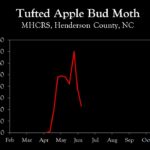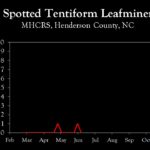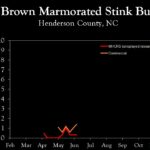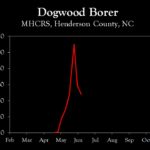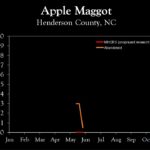WNC Orchard Insect Pest Populations – June 9, 2025
go.ncsu.edu/readext?1077136
en Español / em Português
El inglés es el idioma de control de esta página. En la medida en que haya algún conflicto entre la traducción al inglés y la traducción, el inglés prevalece.
Al hacer clic en el enlace de traducción se activa un servicio de traducción gratuito para convertir la página al español. Al igual que con cualquier traducción por Internet, la conversión no es sensible al contexto y puede que no traduzca el texto en su significado original. NC State Extension no garantiza la exactitud del texto traducido. Por favor, tenga en cuenta que algunas aplicaciones y/o servicios pueden no funcionar como se espera cuando se traducen.
Português
Inglês é o idioma de controle desta página. Na medida que haja algum conflito entre o texto original em Inglês e a tradução, o Inglês prevalece.
Ao clicar no link de tradução, um serviço gratuito de tradução será ativado para converter a página para o Português. Como em qualquer tradução pela internet, a conversão não é sensivel ao contexto e pode não ocorrer a tradução para o significado orginal. O serviço de Extensão da Carolina do Norte (NC State Extension) não garante a exatidão do texto traduzido. Por favor, observe que algumas funções ou serviços podem não funcionar como esperado após a tradução.
English
English is the controlling language of this page. To the extent there is any conflict between the English text and the translation, English controls.
Clicking on the translation link activates a free translation service to convert the page to Spanish. As with any Internet translation, the conversion is not context-sensitive and may not translate the text to its original meaning. NC State Extension does not guarantee the accuracy of the translated text. Please note that some applications and/or services may not function as expected when translated.
Collapse ▲ Depending on elevation, we are either approaching or in that period when most major pests exhibit a low potential for damage, and when insecticide sprays can often be skipped. Codling moth degree-day (DD) accumulations range from about 720 in Henderson County to 1002 in Shelby. First generation codling moth is generally of little concern following a second period of activity between about 600 and 650 DD, which occurred last week in Henderson County. If not using pheromone traps to monitor for codling moth, and if an insecticide has not been used in the past 14 days, a final application should be considered this week. But in most situations both codling moth and oriental fruit moth populations have been very low this year.
Depending on elevation, we are either approaching or in that period when most major pests exhibit a low potential for damage, and when insecticide sprays can often be skipped. Codling moth degree-day (DD) accumulations range from about 720 in Henderson County to 1002 in Shelby. First generation codling moth is generally of little concern following a second period of activity between about 600 and 650 DD, which occurred last week in Henderson County. If not using pheromone traps to monitor for codling moth, and if an insecticide has not been used in the past 14 days, a final application should be considered this week. But in most situations both codling moth and oriental fruit moth populations have been very low this year.
With key pests of relatively low importance at this time, insecticide applications should be based on an as-needed basis for potato leafhoppers, apple aphids and European red mite. A survey of about 10 orchards last week found very low numbers of all these pests. However, mite populations can increase quickly, so monitoring at least weekly is important. Now is also a good time to check fruit for evidence of San Jose scale infestation, which may be present where early season control was not ideal.
Learn more about southeastern apple insect pests at the Apple Insect Management page.
2025 Average Weekly Trap Captures
| HENDERSON COUNTY | |||
| Insects per trap | |||
| May 27 | Jun 2 | Jun 9 | |
| Codling moth | 6.0 | 3.5 | 1.0 |
| Oriental fruit moth | 7.0 | 15.0 | 16.5 |
| Tufted apple bud moth | 70.0 | 38.0 | 23.0 |
| Redbanded leafroller | 2.0 | 20.0 | 20.0 |
| Obliquebanded leafroller | 2.0 | 0.0 | 0.0 |
| Lesser appleworm | 4.0 | 9.0 | 4.0 |
| Apple maggot (unsprayed research orchards) | 0.0 | 0.0 | 0.0 |
| Apple maggot (abandoned orchard) | 3.0 | 3.0 | 0.5 |
| Brown marmorated stink bug (commercial orchards) | 0.6 | 1.0 | 1.4 |
| Brown marmorated stink bug (unsprayed research orchards) | 0.3 | 0.3 | 0.3 |
| Spotted tentiform leafminer | 0.0 | 1.0 | 0.0 |
| Dogwood borer | 110.0 | 58.0 | 48.0 |
| Peachtree borer | 1.5 | 8.0 | 13.0 |
| Lesser peachtree borer | 20.5 | 19.0 | 33.0 |
| San Jose scale | 0.0 | 0.0 | 0.0 |
*Note that these averages illustrate only the timing of insect emergence and fluctuations in populations, and are not representative of population levels in any given orchard. The only way to have an accurate assessment of an individual orchard’s populations is to set up traps in that orchard.
2025 Accumulated Degree Days
| HENDERSON COUNTY | ||||
| May 27 | Jun 2 | Jun 9 | ||
| Codling moth (Biofix: April 21) | 502 | 578 | 719 | |
| Oriental fruit moth (Biofix: March 17) | 1069 | 1175 | 1351 | |
| Tufted apple bud moth (Biofix: April 14) | 747 | 853 | 1029 | |





